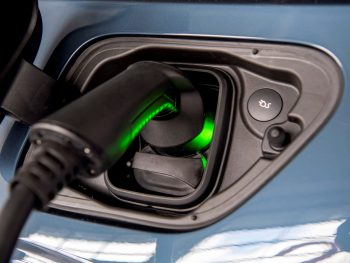EV drivers short-changed up to 15p a mile on Advisory Electricity Rate
Electric car and van drivers are up to 15p a mile out of pocket when reimbursed at the Government’s “out-of-date” Advisory Electricity Rate (AER), new research finds.

It costs drivers more than the 5p per mile AER rate in 94% of cases
Analysis by EV payment specialist Mina has shown that in 94% of cases it was costing drivers more than the 5p per mile HMRC advises employers to repay employees.
The research, taken from its EV Report – Summer 22 report, analysed more than 32,500 charging events, at home and in public.
It found that on average public charging equates to a cost of 20ppm – significantly lower than the AER. Not a single journey undertaken with public charging hit the 5ppm mark.
But even when charging at home, the average cost is 9ppm – meaning drivers are still missing out by 4ppm. After charging at home, only 6% of recorded journeys managed 5ppm or less.
Ashley Tate, Mina CEO and co-founder said the data shows that the current AER is completely unfit for purpose, because it does not reflect the cost of real-life electric driving.
And he warns that the ‘disconnect’ will become even greater this winter when energy prices rise – likely to have a serious impact on the transition to electric vehicles.
“Those already in EVs will want to know why they are personally subsidising their business travel, while employees about to make the switch to electric may refuse once they realise they will be losing financially on every work trip they make.”
Employers can offer to pay more than the advisory rate, but they will only avoid a taxable Benefit-in-Kind if they can actually demonstrate a higher electricity cost per mile for business travel – something that’s far more labour-intensive compared to using the AER rate.
Tate continued: “The issue is that charging is not a simplistic, one-size-fits all process, as filling a tank with petrol and diesel is. Homeowners are all on varying tariffs, and within those tariffs the costs can be different at different times of the day.
“Then, in public, charging networks all have vastly different rates – our figures show they can vary from free, to 30 p per kWh as the cheapest paid-for rate, and up to £2.77 if things like parking are included. How is a business going to show to HMRC what is a reasonable rate when there are so many different factors involved? It would be a vast statistical undertaking.”
However, using the Mina platform – which tracks all charging at home, and within its public charging network – means fleets have data on exactly what an employee is paying for electricity every time they plug in.
That means it can assign the real amount for private and business to every charge, so the employee’s charging costs are always paid for accurately but with far less admin for both business and employee. It’s also approved by HMRC, so there’s no BiK to pay on rates above the AER.
Tate added: “Our figures prove that simplistic, blunt instruments such as the AER don’t work. And it won’t work – no matter how much HMRC raises the figure – in this more complex cost environment with its many different vehicle types, tariffs and charges. But our innovative solution, which takes all of this into account, makes paying for EV charging radically simple, and crucially, fair.”
To download a copy of Mina’s EV Report – Summer 22, click here.












